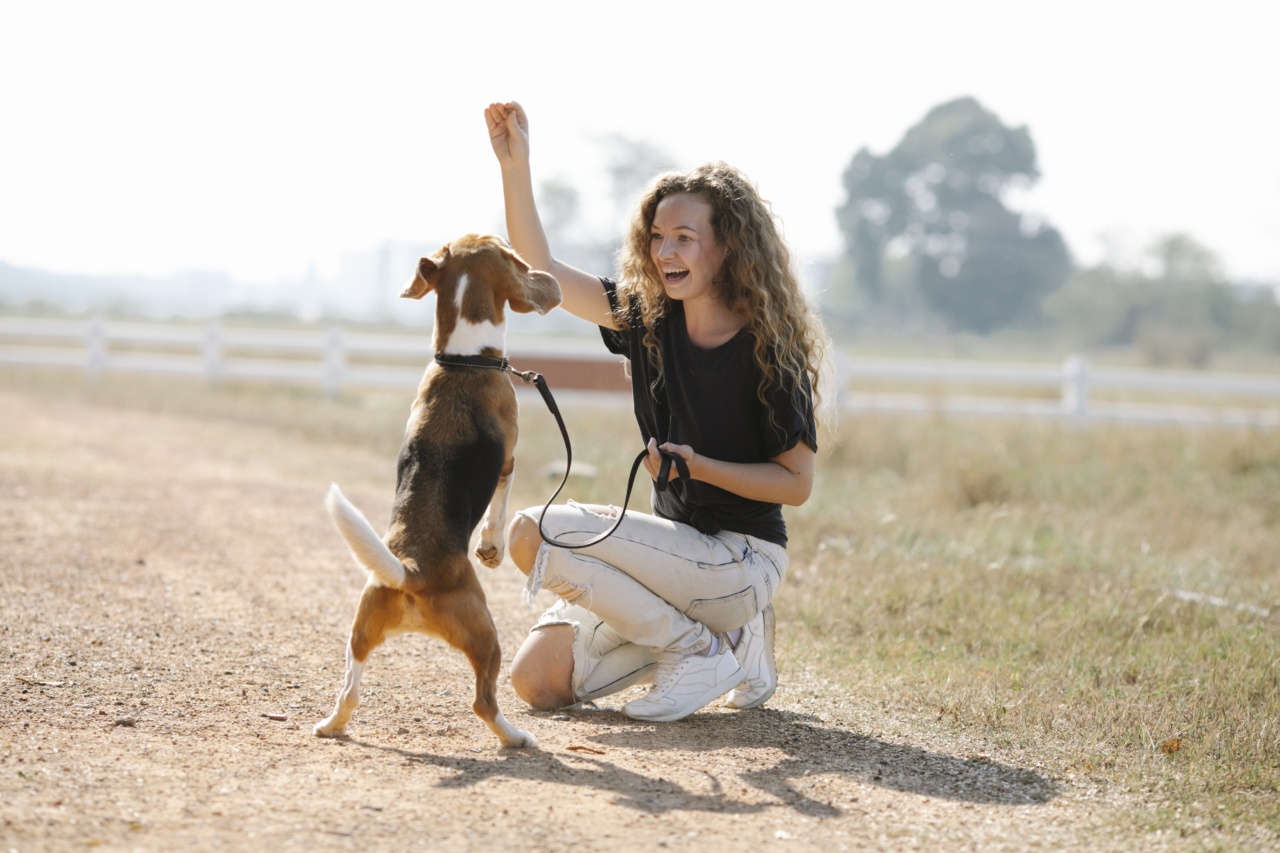Training your furry friend is essential to ensure they understand right from wrong, follow commands, and exhibit good behavior. However, with so many training techniques available, it can be overwhelming to decide which one is right for your dog.
In this article, we will discuss various training methods and help you choose the most suitable one for your canine companion.
1. Positive Reinforcement Training
Positive reinforcement training is a popular and effective approach that focuses on rewarding your dog for desired behaviors. This technique involves using treats, praises, toys, or any other reward when your dog performs the desired action.
By associating a positive outcome with good behavior, your canine friend will be motivated to repeat that behavior.
Positive reinforcement encourages a healthy and strong bond between you and your dog. It is a gentle approach that does not involve harsh punishments or force.
This method can be used for teaching basic obedience commands, tricks, and even solving behavioral issues.
2. Clicker Training
Clicker training is a type of positive reinforcement training that uses a distinct sound, usually from a handheld clicker, to mark the exact moment your dog performs the desired behavior.
The click sound is immediately followed by a treat or reward to reinforce the behavior. Over time, your dog will learn to associate the click with a positive outcome and strive to repeat the action.
Clicker training is precise and allows for clear communication between you and your dog. It can be especially useful for shaping complex behaviors or tricks. However, it requires consistency and precise timing to be effective.
3. Voice Command Training
Voice command training relies on spoken cues to teach your dog various commands and behaviors. This method emphasizes using specific words or phrases to signal your dog to perform a particular action.
For example, saying “sit” to prompt your dog to sit down.
Voice command training is based on clear and consistent communication. It is important to use the same words for specific actions to avoid confusion.
This training technique can be combined with other methods, such as positive reinforcement, to reinforce desired behaviors.
4. Alpha Dog Training
Alpha dog training, also known as dominance-based training, is a technique based on the concept of establishing yourself as the “alpha” or pack leader.
This method focuses on asserting control, disciplining the dog for unwanted behaviors, and using physical techniques to show dominance.
While alpha dog training was once popular, it has received criticism in recent years. Many experts argue that dominance-based training can lead to fear, aggression, and an imbalance in the owner-dog relationship.
Positive reinforcement and reward-based training approaches are generally considered more effective and humane.
5. Relationship-Based Training
Relationship-based training centers around building a strong bond and mutual trust between you and your dog. It involves understanding your dog’s needs, emotions, and behavior to address any training issues effectively.
Relationship-based training emphasizes positive reinforcement, communication, and understanding your dog’s individual personality.
This method focuses on creating a partnership and working together with your dog, resulting in a happy, well-behaved companion. It requires patience, consistency, and empathy.
Relationship-based training is often recommended for dogs with behavioral issues or anxiety.
6. Scientific or Evidence-Based Training
Scientific or evidence-based training is a modern approach that relies on scientific research and studies to develop effective training techniques.
Positive reinforcement, operant conditioning, and understanding canine behavior are the foundation of this method.
This approach involves using positive reinforcement, rewards, and avoiding punitive measures. The techniques are based on principles like classical conditioning, where dogs learn to associate specific actions or cues with rewards or consequences.
7. Leash Training
Leash training is essential for teaching your dog how to walk properly on a leash without pulling or lunging. This method involves using a leash to guide your dog’s movements and reinforcing good behavior with rewards.
Leash training allows you to have better control and ensures the safety of your dog during walks.
Consistency and patience are crucial when leash training your dog. It’s important to reward your dog for walking calmly beside you and to correct any pulling or other undesirable behaviors.
8. Reward-Based Training
Reward-based training, also known as treat training, focuses on positive reinforcement through rewards such as treats, praises, or playtime.
This technique involves rewarding your dog when they perform the desired behavior, making them more likely to repeat it in the future.
The use of rewards makes training sessions enjoyable for your canine companion, promoting a positive learning experience. Reward-based training is effective for teaching basic commands, obedience training, and solving minor behavioral issues.
9. Crate Training
Crate training involves using a crate or kennel as a safe and comfortable space for your dog. This method can be used for house training, providing a secure place for your dog to rest, and preventing destructive behavior when unsupervised.
Gradual introduction to the crate, positive reinforcement, and making the crate a pleasant place for your dog are crucial to successful crate training. It’s important to avoid using the crate as a form of punishment.
10. Group Training Classes
Group training classes are an excellent way to socialize your dog, reinforce obedience commands, and learn new skills under the guidance of a professional trainer.
These classes allow your dog to interact with other dogs and people while working on training exercises and commands.
Group training classes provide a structured environment and help build focus and discipline in your dog. Additionally, it provides an opportunity for you to receive guidance from an experienced trainer and learn from other dog owners.
Conclusion
Choosing the right training technique for your canine companion is essential for effective and humane training. It’s important to consider your dog’s personality, needs, and your own training goals.
Positive reinforcement-based training methods, such as positive reinforcement training, clicker training, and relationship-based training, are generally considered the most effective and humane approaches. Remember, training should be a fun and rewarding experience for both you and your furry friend.
























